The Melbourne Pollinator Corridor (MPC), is 8km community-driven wildlife corridor that will link 2 large green patches that run along the Birrarung (Yarra River), Westgate Park and the Royal Botanic Gardens Melbourne.
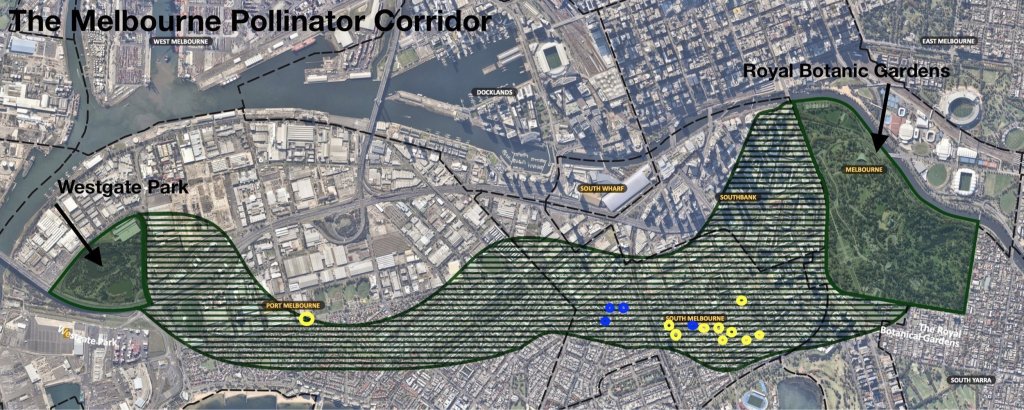
The MPC focusses on native bees and other native pollinating insects, with the aim to bring 18,000 indigenous plants in 200 gardens by the end of 2024. It has been designed within local council constraints and with over 20 scientists and specialists. So far, they have turned over 480 square metres of barren public land into gardens filled with critters and beauty.
This is the first wildlife corridor like this in Australia, so not only are we seeing a project that will strengthen local flora and fauna and help everyone in the local community but it is also creating a precedent. And it’s all thanks to one person, Emma Cutting.
Guided by her profound concern over the increasing dominance of concrete and asphalt in urban environments and the urgent calls to action by leaders like Sir David Attenborough, Emma founded The Heart Gardening Project.
The Heart Gardening Project (THGP) exists for several crucial reasons:
Firstly, there is a significant amount of public land that remains unused and neglected. THGP aims to transform these spaces into vibrant, purposeful areas that benefit the community.
Secondly, amidst the escalating Climate Crisis, there remains a glaring lack of efforts to expand diverse public plantings. THGP seeks to address this by engaging communities, enhancing biodiversity, and tackling urban environmental challenges.
Thirdly, the rapid decline of native pollinators underscores the urgent need to restore habitats that support their survival. THGP focuses on replanting native species to create vital habitats for these essential creatures.
Lastly, the pervasive disconnection from both nature and other humans contributes to widespread mental health issues such as loneliness and depression. THGP recognizes the healing potential of nature and aims to reconnect individuals with their environment and community through gardening initiatives.
The Heart Gardening Project has set ambitious goals for its future endeavors. By the end of 2024, THGP plans to complete 200 gardens within the MPC zone, paving the way for its expansion across Melbourne. Integral to this expansion is the establishment of robust maintenance systems to ensure the longevity and vitality of these green spaces. Using the Melbourne Pollinator Corridor (MPC) as a proving ground, THGP aims to showcase to communities across Australia, and globally, how urban biodiversity can be significantly enhanced through thoughtful public plantings. This initiative not only aims to bolster native pollinator populations but also serves as a model for creating similar pollinator corridors elsewhere.
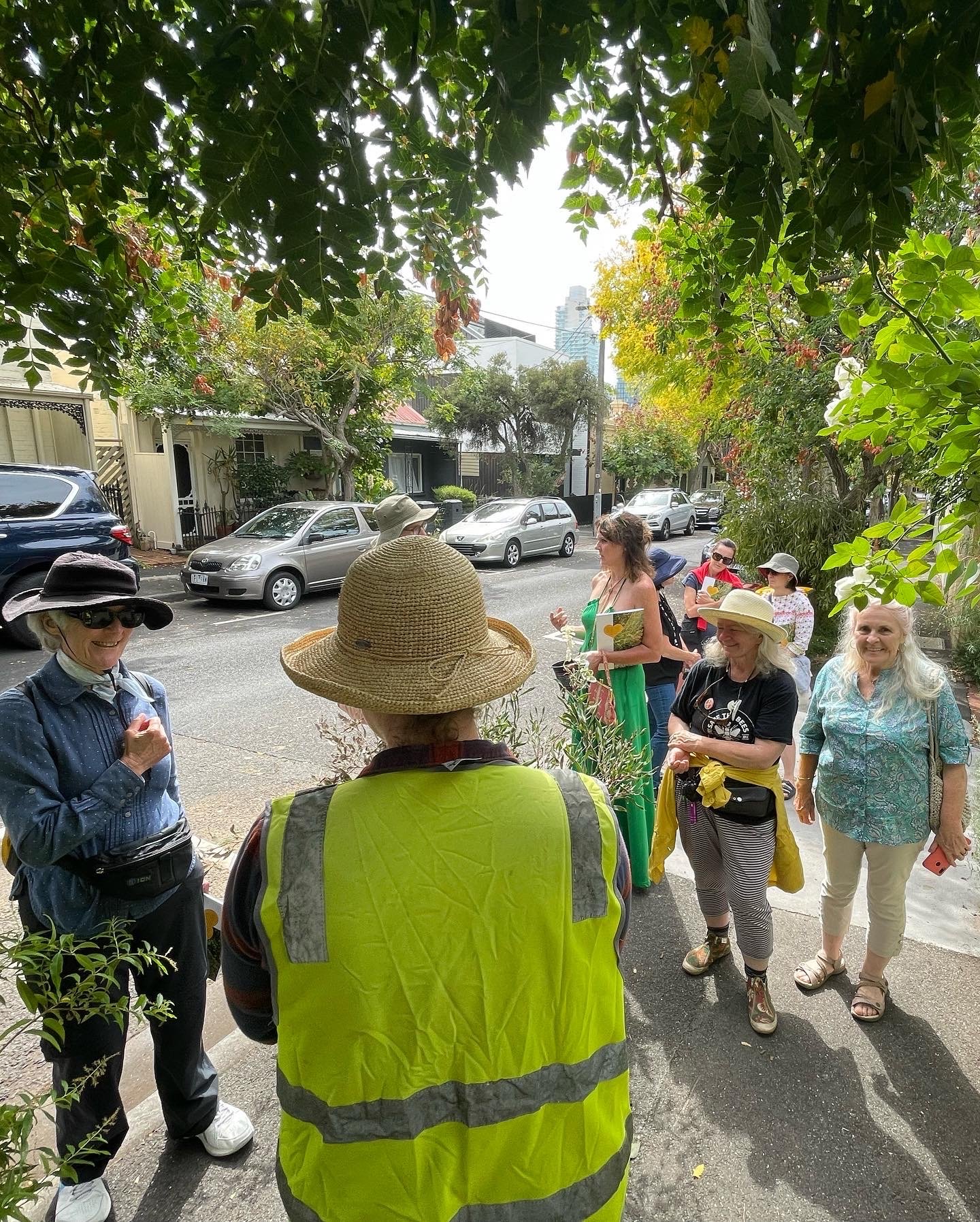

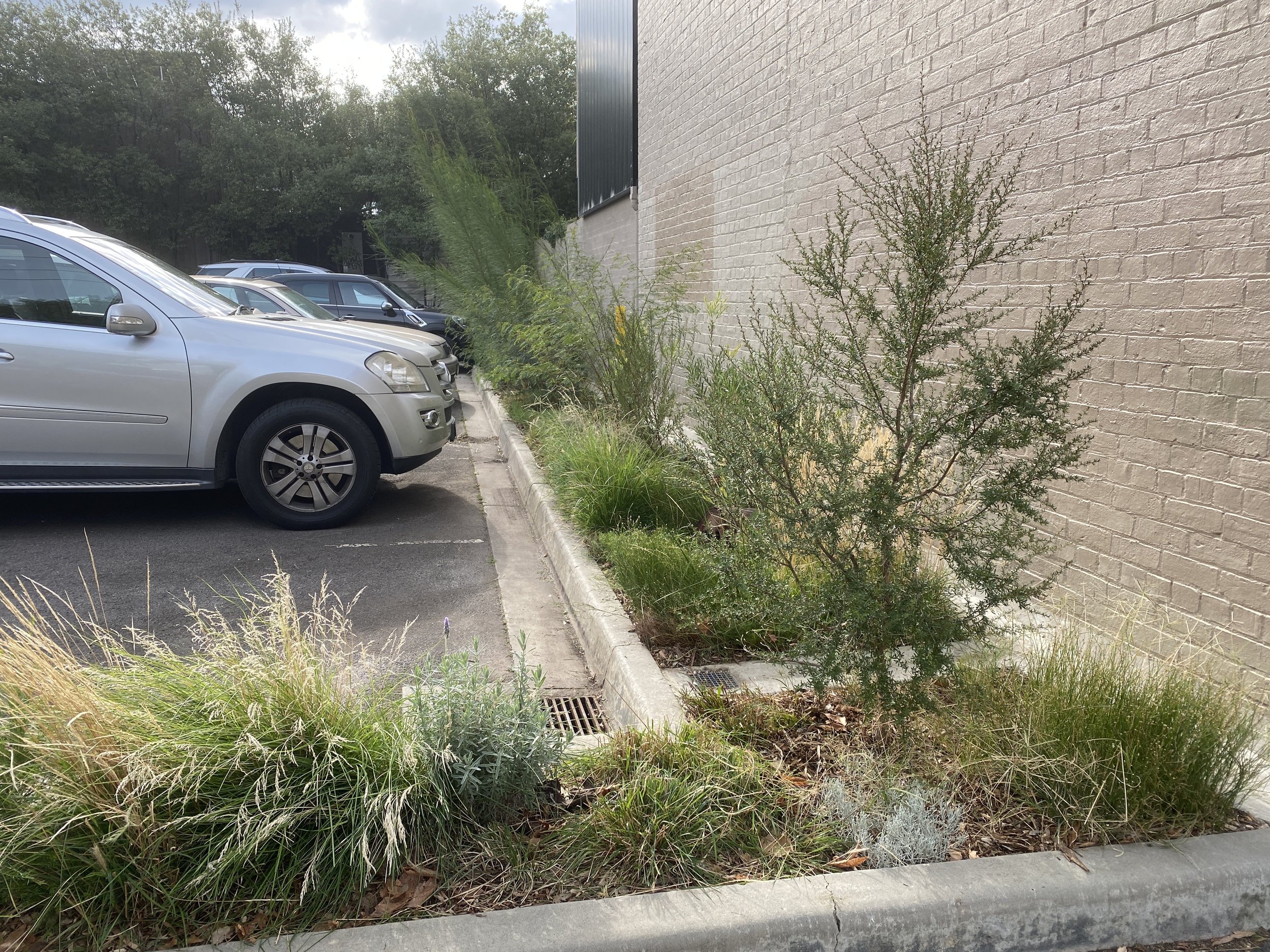


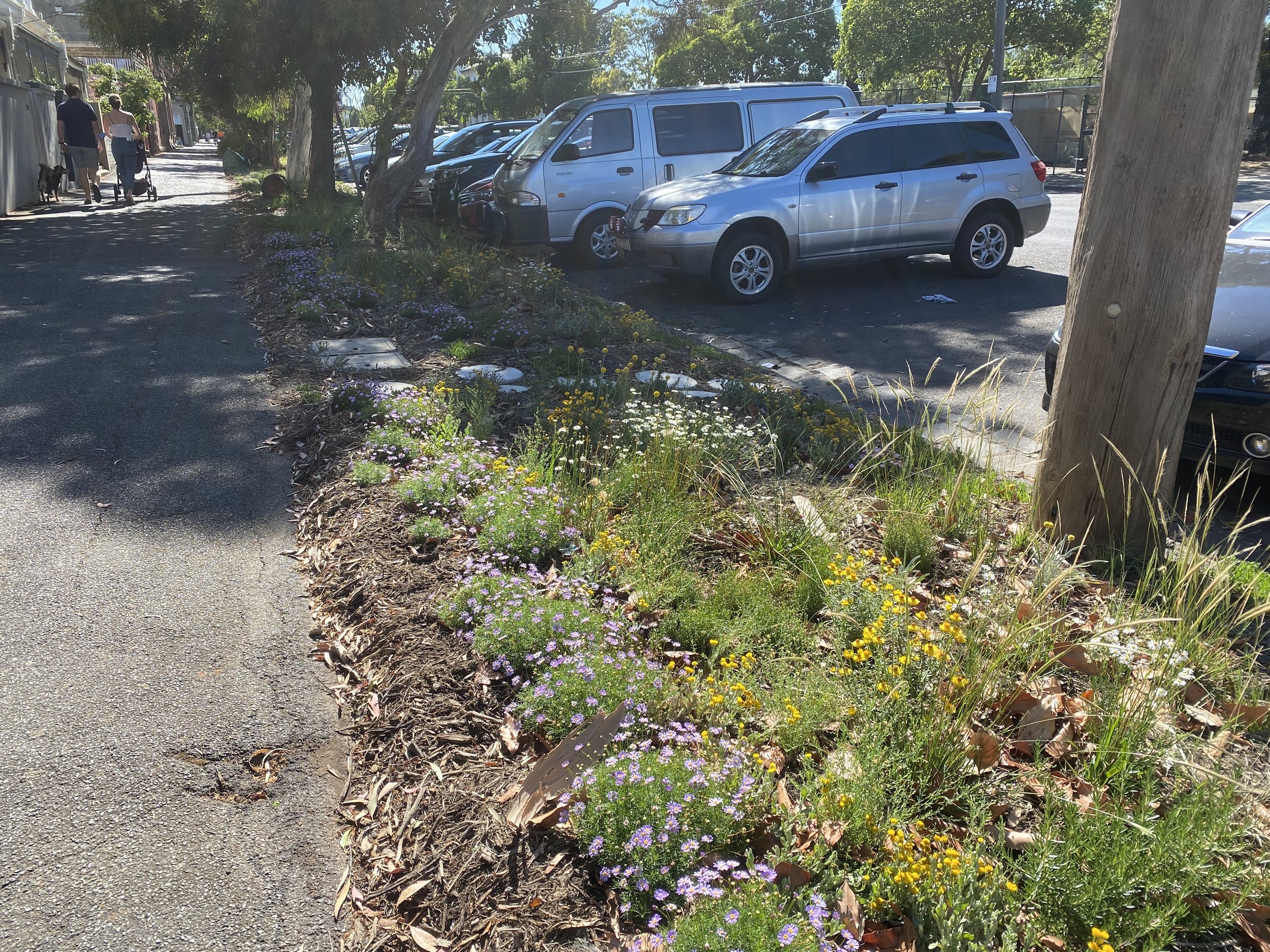
Over the next decade, THGP intends to engage in citizen science initiatives linked to the MPC, exploring connections between indigenous cultural knowledge and western scientific practices. This approach not only enriches understanding but also fosters inclusive environmental stewardship. Moreover, THGP seeks to influence policy and guidelines pertaining to street gardening, advocating for supportive frameworks that encourage community involvement and sustainable practices. By fostering widespread participation and demonstrating tangible positive impacts, THGP aims to catalyze meaningful change in biodiversity conservation and mental health improvement on a global scale.
Designing a shared, open-ended process
The Melbourne Pollinator Corridor consists of small street gardens created, managed, and maintained by local residents. Together, these gardens form a collaborative corridor that continues to expand in scope. This decentralized yet coordinated approach necessitates openness and flexibility. Rather than imposing a rigid design. The project offers loose frameworks that define the overall scope of the corridor while guiding individual garden designs.
Instead of a detailed masterplan, the corridor is conveyed through a diagrammatic drawing that captures the project’s ambition. This plan outlines a structure that facilitates coordination across gardens, enhancing the collective vision greater than the sum of its parts. At the garden level, Emma has developed design templates that provide guidance while encouraging personal interpretation – a concept she refers to as “tailored participation.” This approach allows each participant to contribute uniquely to the project.
Emma emphasizes that the project aims to support diverse approaches to gardening, fostering learning and encouraging community engagement. She explains, “The project is about recognizing that each person will approach their garden differently, empowering individuals to understand and contribute to the initiative.” By remaining open to interpretation, the project enables participants to shape their own experiences of involvement.
Overall, the MPC thrives because all gardens adhere to a shared set of principles and values, while remaining adaptable to evolving needs and forms throughout the project’s progression.
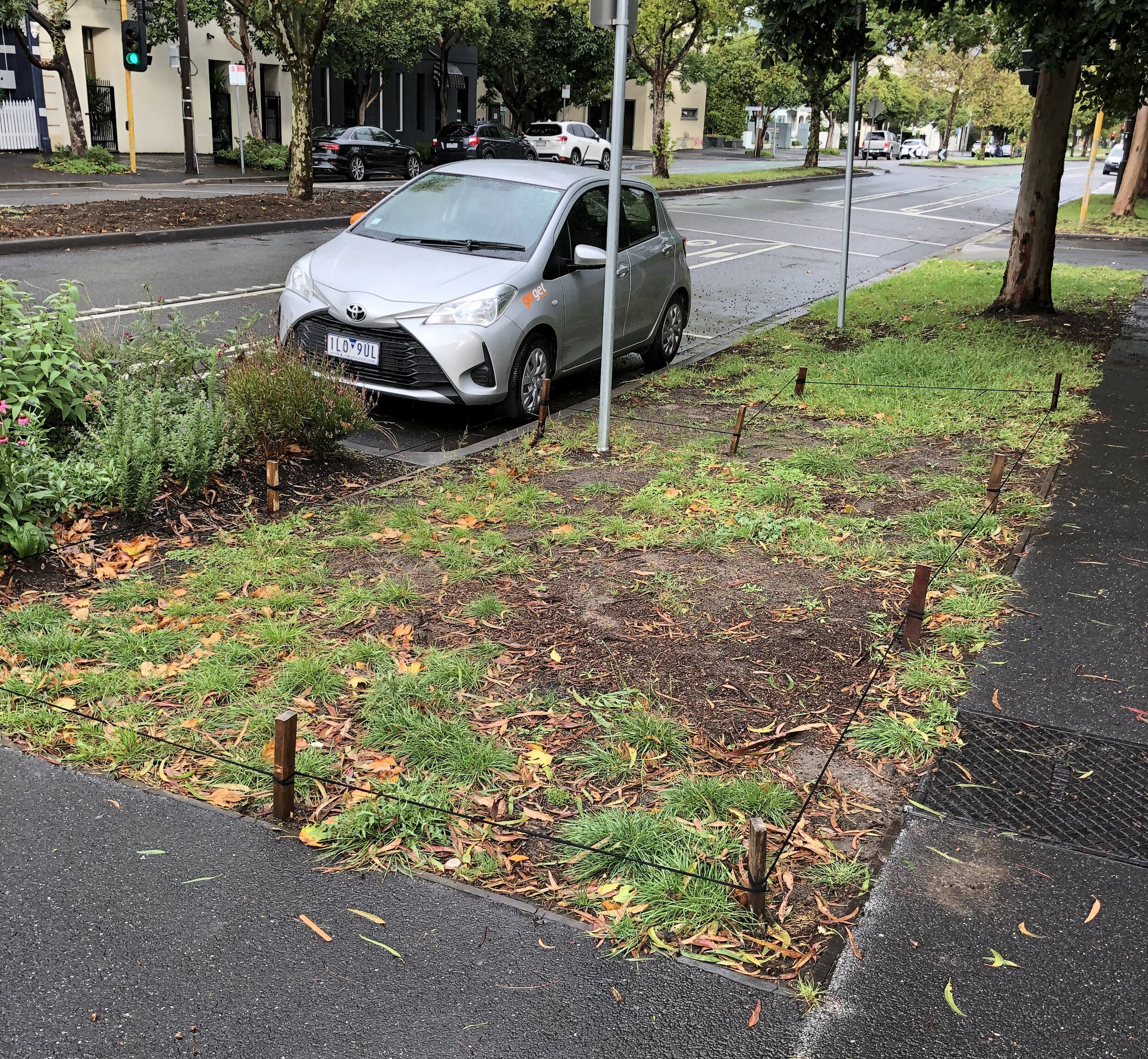
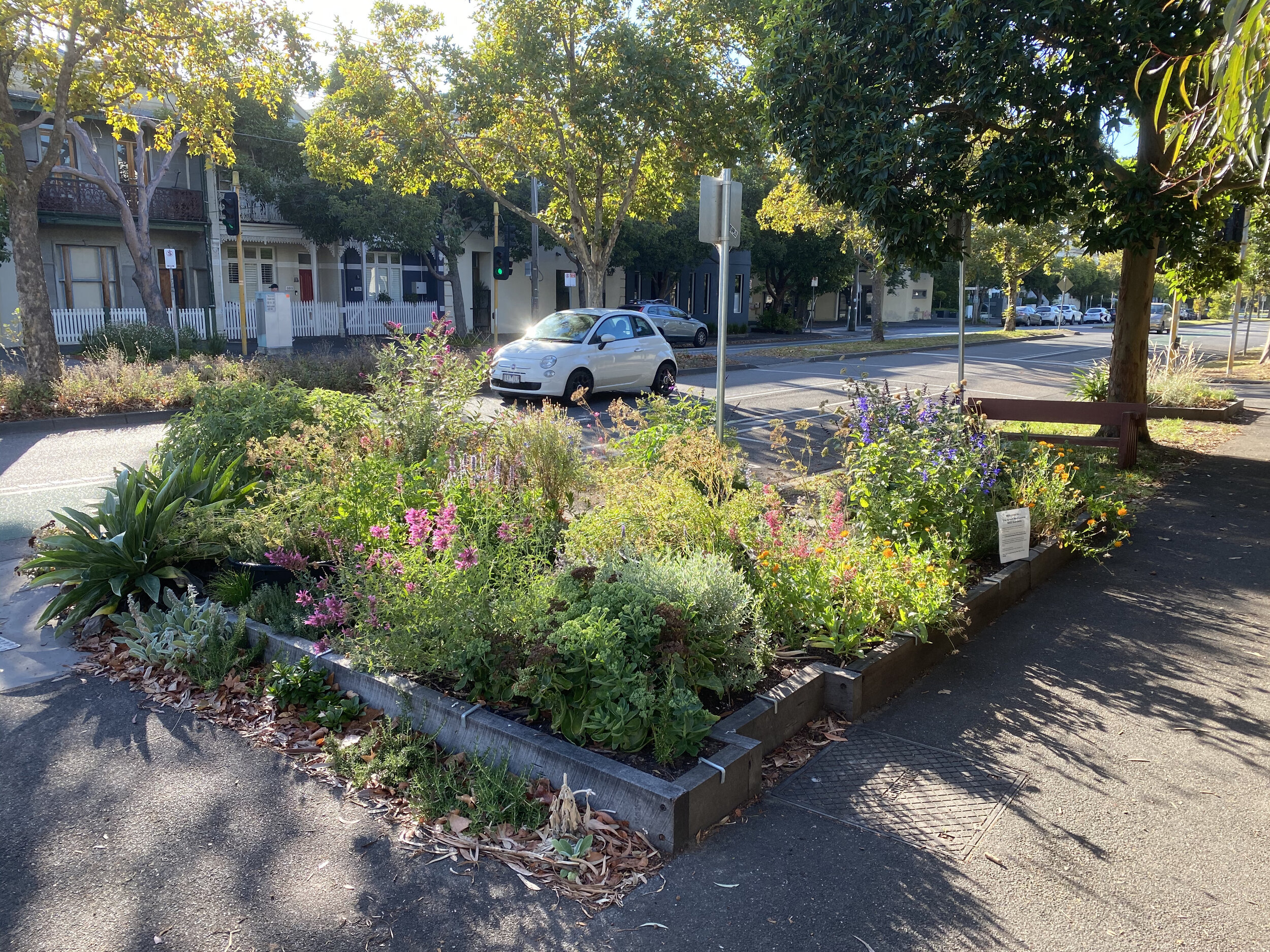
New modes of documentation, new ways of seeing the built environment
Central to the project’s community-led approach are user-friendly and inclusive documentation methods that make design and technical knowledge accessible to non-designers. One such example is the Melbourne Pollinator Corridor Handbook, written by Emma, who describes it as “the handbook I wish I had years ago when I started my journey into street gardening and urban biodiversity.” The handbook serves as a visionary document, a field guide, and a comprehensive technical reference.
The handbook connects various fields of knowledge to create a comprehensive guide tailored for non-designers or gardeners. Emma consulted with over 30 scientists and specialists – including conservationists, entomologists, native bee experts, and ecologists – to compile the information. This resulted in an accessible eight-step process for planning, designing, constructing, and maintaining projects. The handbook also features extensive plant lists, supplier information, and advice on navigating regulatory challenges. Despite its complex content, it maintains approachability through a storytelling tone and supportive illustrations.
I finally got my hands on a copy of the Melbourne Pollinator Corridor Handbook, and immediately read it cover to cover. While it is specifically written for people involved the MPC it is packed full of information about bees and pants and chock full of great information for anyone interested in doing similar.



You can order your copy here: https://theheartgardeningproject.org.au/shop/p/melbourne-pollinator-corridor-handbook
Check out The Heart Gardening Project web site, where you can donate to the project and find out more. https://theheartgardeningproject.org.au/

All Images via The Heart Gardening Project web site.
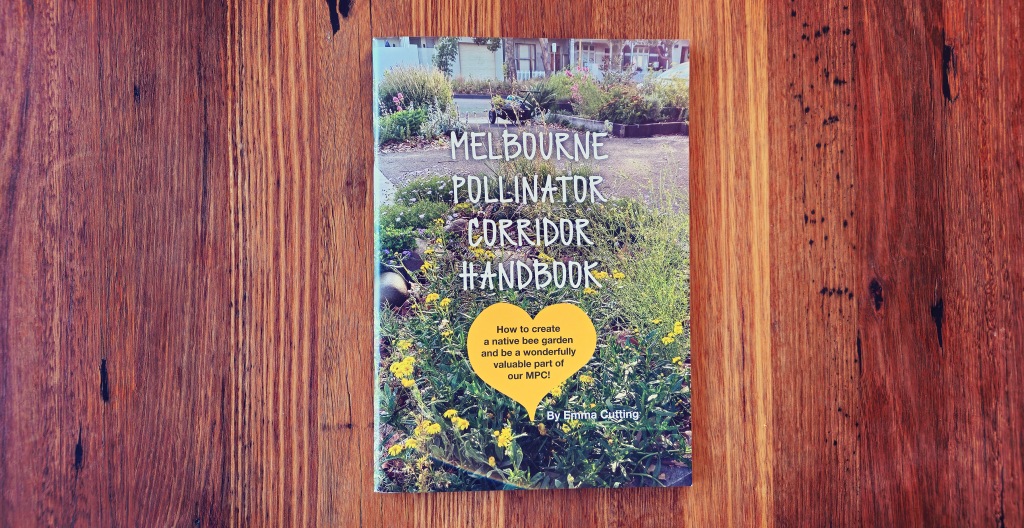






Leave a comment